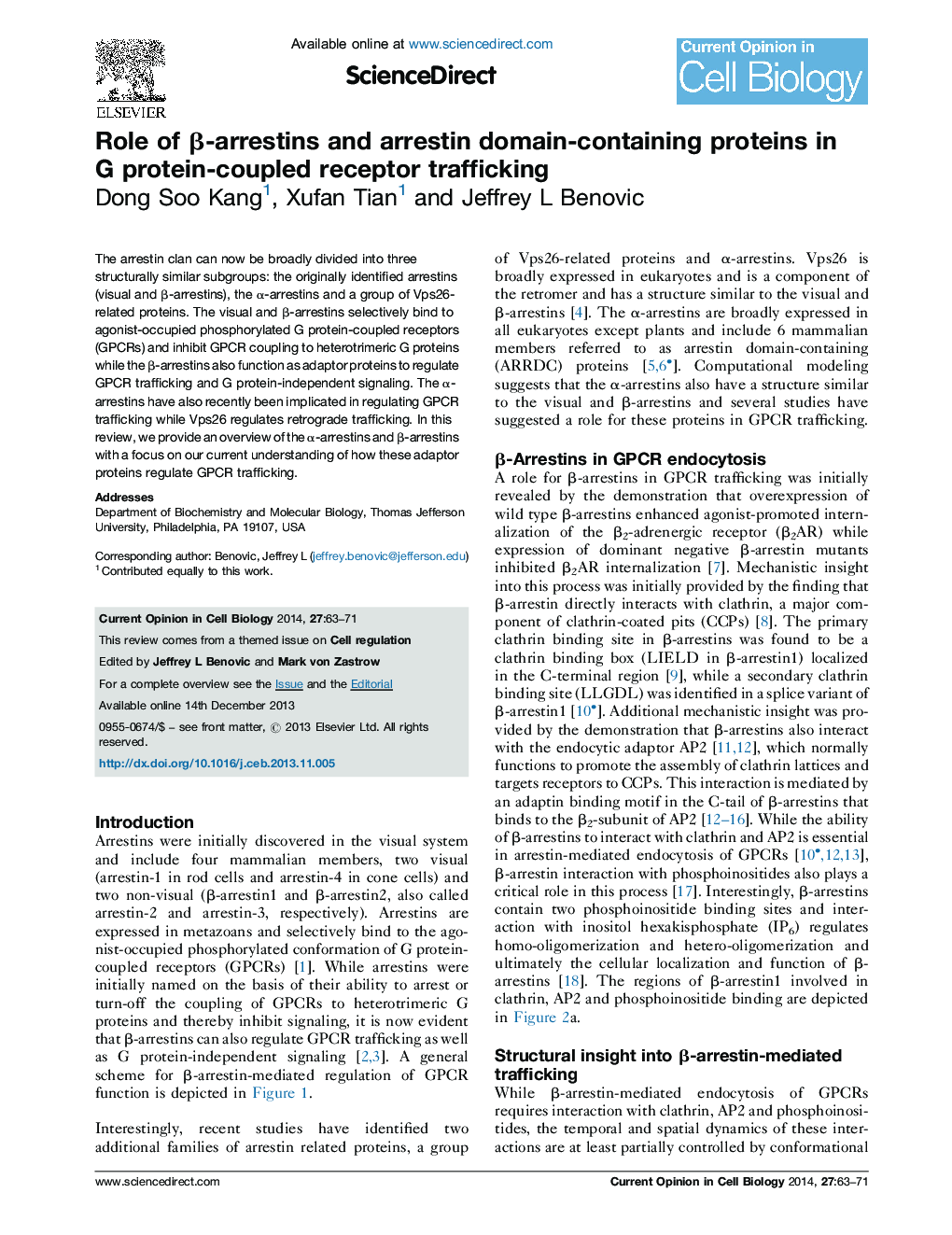| Article ID | Journal | Published Year | Pages | File Type |
|---|---|---|---|---|
| 8465982 | Current Opinion in Cell Biology | 2014 | 9 Pages |
Abstract
The arrestin clan can now be broadly divided into three structurally similar subgroups: the originally identified arrestins (visual and β-arrestins), the α-arrestins and a group of Vps26-related proteins. The visual and β-arrestins selectively bind to agonist-occupied phosphorylated G protein-coupled receptors (GPCRs) and inhibit GPCR coupling to heterotrimeric G proteins while the β-arrestins also function as adaptor proteins to regulate GPCR trafficking and G protein-independent signaling. The α-arrestins have also recently been implicated in regulating GPCR trafficking while Vps26 regulates retrograde trafficking. In this review, we provide an overview of the α-arrestins and β-arrestins with a focus on our current understanding of how these adaptor proteins regulate GPCR trafficking.
Related Topics
Life Sciences
Biochemistry, Genetics and Molecular Biology
Cell Biology
Authors
Dong Soo Kang, Xufan Tian, Jeffrey L Benovic,
